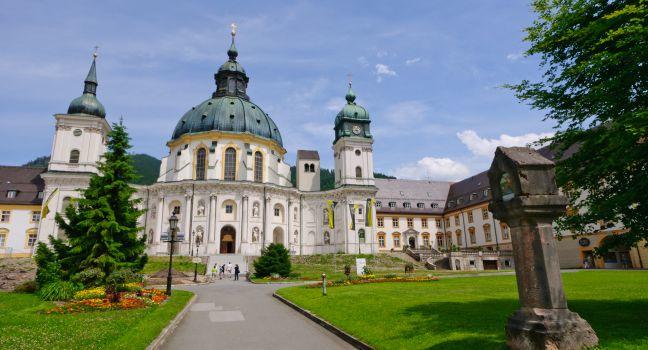On the back of the altar in this 18th-century church (as in Oberammergau, built by Josef Schmutzer and decorated by Matthäus Günther) you'll find Matthias Klotz's name, carved there by the violin maker himself. Note that on some of the ceiling frescoes, the angels are playing violins, violas da gamba, and lutes. In front of the church, Klotz is memorialized as an artist at work in vivid bronze sculpted by Ferdinand von Miller (1813–79), creator of the mighty Bavaria Monument in Munich. The church, with its elaborate and joyful stuccowork coiling and curling its way around the interior, is one of the most important rococo structures in Bavaria. The Gothic choir loft was added in the 18th century. The bold frescoes on its exterior are characteristic of Lüftlmalerei, where images, usually religious motifs, were painted on the wet stucco exteriors of houses and churches. On nearby streets you can see other fine examples on the facades of three famous houses: the Goethehaus, the Pilgerhaus, and the Pichlerhaus. Among the artists working here was the great Franz Seraph Zwinck.




